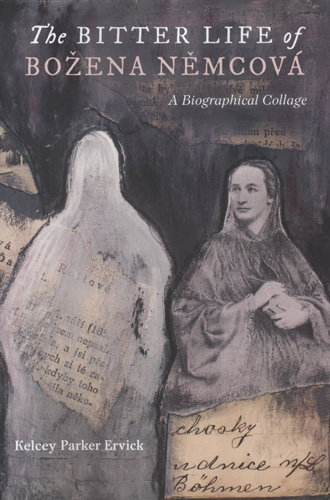The Bitter Life of Božena Němcová
Who was this 19th century Czech woman that Kelcey Parker Ervick writes about in her book, The Bitter Life of Božena Němcová? And why, she wonders, hadn’t she previously heard about this woman who is so famous in Europe? I also wondered why I’d never heard of her. In checking with friends in Prague, I discovered that Němcová was indeed a cherished figure who is introduced to school children and is still held in esteem almost two centuries later. In fact, she’s pictured on the Czech 500 koruna bill.
Who was this 19th century Czech woman that Kelcey Parker Ervick writes about in her book, The Bitter Life of Božena Němcová? And why, she wonders, hadn’t she previously heard about this woman who is so famous in Europe? I also wondered why I’d never heard of her. In checking with friends in Prague, I discovered that Němcová was indeed a cherished figure who is introduced to school children and is still held in esteem almost two centuries later. In fact, she’s pictured on the Czech 500 koruna bill.
Ervick’s introductory pages are key to getting the most enjoyment out of her book. She stresses that it’s not a biography in the traditional sense, but an “excavation and hopefully an unveiling.” Her book presents an unusual arrangement. Pages are devoted to snatches of text from Němcová’s stories, fairy tales, poems and letters. These pages alternate with snippets of material from numerous sources to further illuminate Němcová. Explanatory comments footnote each page, tending to slow the flow of the book.
Before long, I found myself skipping the footnotes and sailing through the actual text, where I learned about the Czech writer from her own writings and other sources’ notes. They are captivating, as in Němcová’s fairy tale, “The Little Stars of Gold,” which begins the book:
Once upon a time,
there was a little girl,
six years old, Božena
by name. She was an
orphan.
The remaining story has the poor orphan girl giving whatever she has to needy people. It’s not until part three that: “All at once, she saw little stars falling in her pathway. [ . . . ] She began to gather them up in her hands, tossing them up and down.” Then, in a delightful twist of fairy tale plot, “[ . . . ] there was one of the little stars making itself into a pancake for her breakfast!” A very happy ending awaits, as hinted to in the tale’s title.
I appreciate the time and work that went into researching this book. Ervick points out some of the questions she dealt with in piecing together Němcová’s life: “Was she born in 1820, 1818, or 1817? Were her parents peasants, or was she the illegitimate daughter of royalty?” These questions go unanswered. Was she actually a bitter woman? Ervick discovered “short entries that praised her fairy tales and lamented her bitter life.” She continues, “I found these claims surprising in the context of her writing,” adding that her “stories are full of happy endings.”
Němcová’s best known book is The Grandmother, a story of village lore that was said to be modeled on her own grandmother. According to Radio Prague’s Virtual Cemetery, “She burst into tears” on receiving her author’s copy of the book “because it was printed with so many mistakes and on the cheapest paper.”
Němcová married Josef Nemic in 1837, and their relationship is pretty much summed up in a sentence from her 1854 letter to an unknown addressee: “When I married I wept for my lost freedom and the beautiful dreams and ideals of my life that were destroyed forever.” Thereafter, marital fidelity was put on the back burner, as shown in a quote from one of Ervick’s sources, Wilma Iggers’s book Women of Prague, where Iggers names seven of Němcová’s lovers and hints there may have been more.
Another source, this from Dr. John Callow in a talk he delivered in 2008, gives the reader another clue to Němcová’s personality:
But for all she is a heroine nowadays, in her own lifetime she was much reviled, since she flouted both literary and social conventions—she was too much of a tearaway and a rebel, so was sidelined out of public life.
Němcová died in her early 40s, apparently of cancer. The above source also wrote that “The news of her death was carried by all the Czech and German newspapers in Prague.” A statue of Božena Němcová was unveiled in Prague 25 years after her death.
The Bitter Life of Božena Němcová is lavishly illustrated throughout with artwork and photos by Ervick and others. It ends with a chapter of notes Ervick writes as “postcards to Božena, which became a meditation on life, letters, love, and happy endings.” Though the setup of this book is almost like reading two books at once, take a deep breath, step away from the crowd, and tackle this book to learn about a fascinating 19th century woman.





